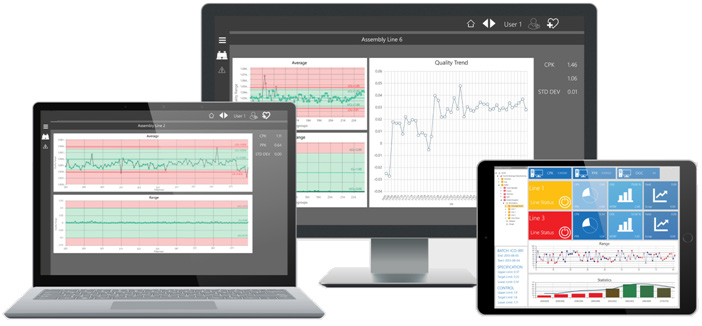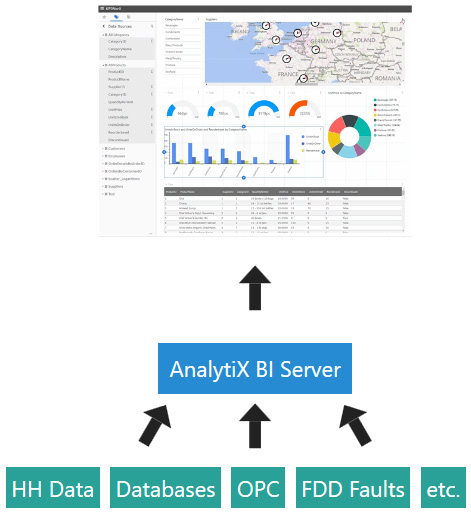AnalyticsView
Tool for Data Manipulation and Analysis

Transform massive amounts of your Plant Data into Actionable, Real-Time Intelligence
SMAR's AnalyticsView solutions lead to improvements in productivity, efficiency, quality and sustainability.
The solutions can be applied to solve common business intelligence (BI) challenges, allowing users to quickly and easily transform data into information without the help of IT or data scientists.

Solutions can leverage technologies such as expert systems and machine learning in big data applications, leading to visualization and reporting solutions to address, for example, quality, efficiency and maintenance issues.
Critical operational information is organized into a user-defined, ISA S95-compliant asset catalog for analysis, visualization and operation. And users can expand the analysis with their own calculations.
The solution includes two important tools, AnalytiX-BI and Fault Detection and Diagnostics (FDD).
AnalytiX-BI is a tool that was created to deal with information dispersion and other situations that make it difficult to have a cohesive view of a system.
It opens up new possibilities for analyzing business intelligence (BI) information within an operational context to reduce costs and maximize efficiency. It improves data accessibility, enables analytical processing, and provides data modeling/context with incredible performance and intuitive visualization. It offers data models with intuitive point-and-click capabilities and powerful query technologies that connect IT, management, and business systems.

Fault Detection and Diagnostics (FDD) technology significantly reduces costs and improves operational efficiency. Failure rules can be customized to predict equipment failures and advise on preventive actions. Before the emergence of FDD software solutions, many organizations relied on institutional expertise to repair or maintain their wide range of equipment. After the development of FDD technology, this kind of information (the myriad symptoms, causes, and recommended actions) that may only exist in the minds of experienced professionals or, with luck, in printed or electronic files, can now be used in algorithms to help organizations to move from reactive (“break/fix”) maintenance to more modern and cost-effective predictive maintenance.







